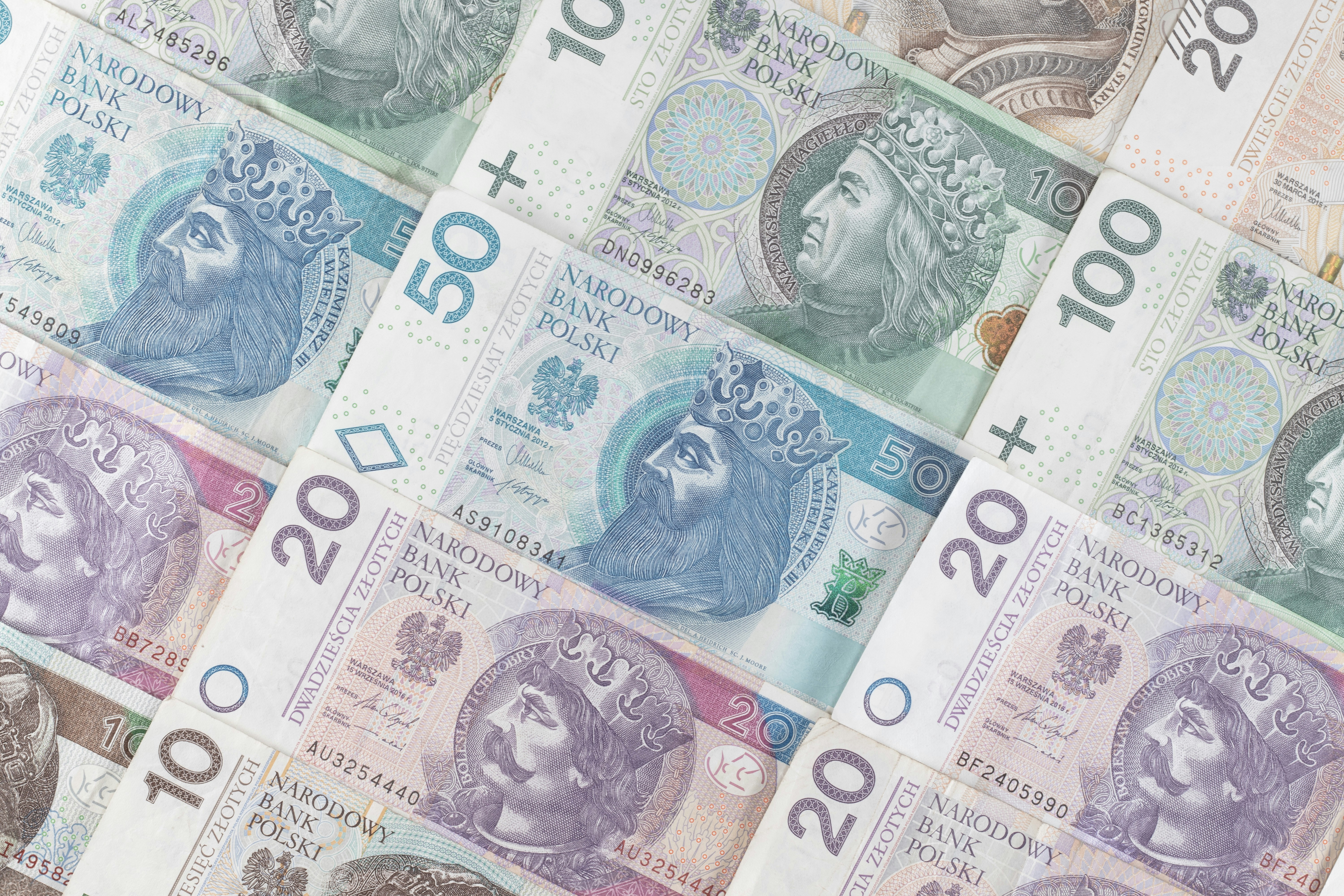What Is a Dividend, How Do They Work and How to Invest

Dividends play a crucial role in wealth management by symbolizing a company's sharing of profits with its shareholders. If a company's board considers its financial well-being strong, it can distribute dividends to shareholders as part of their income.
These payments, usually sent straight to a brokerage account, demonstrate a company's strong cash flow and dedication to distributing wealth. The frequency and size of dividends may differ, particularly when a company is experiencing financial troubles, despite their ability to bring in new investors.
Interested in how dividends can boost your investment approach? Continue reading to grasp how this instruments serve as both a form of compensation and a chance for reinvestment.
Table of Contents
Key Takeaways
What are Dividends?
Reasons Companies Pay Dividends
Types of Dividends
Frequency of Dividend Payments
Dividend Payment Process & Important Dates
Impact on Share Price
Evaluating Dividends
Dividend Taxation
Investing in Dividends
Conclusion
FAQs
Key Takeaways
-
Dividends Definition: Portions of company profits paid to shareholders, serving as a reward for investment.
- Types of Dividends: Includes cash, stock, special, property, preferred stock dividends, and dividend reinvestment plans (DRIPs).
- Payment Frequency: Dividends are typically paid quarterly, annually, or semiannually.
- Dividend Process:
- Declaration Date: Company announces the dividend.
- Ex-Dividend Date: Stock trades without dividend entitlement.
- Record Date: Identifies eligible shareholders.
- Payment Date: Dividends are distributed. - Financial Impact: Dividends can influence stock price and are evaluated using a company's dividend yield, payout ratio, and dividends per share.
- Tax Implications: Qualified dividends may receive favorable tax rates, while other dividend stocks are taxed as regular income.
- Investment Considerations: Investors should assess dividend sustainability and potential returns using various financial metrics.
What are Dividends?
Dividends are the portion of profits that a company gives to its investors as a visible acknowledgment of their financial support. Periodic dividends are regularly distributed, indicating a consistent dividend payment schedule that may indicate a company's long-lasting profitability.
Certain companies also provide unique dividends to underscore outstanding financial periods or singular occurrences. Moreover, an important consideration for investors looking for increasing income streams is the growth of dividends, which distinguishes companies as dividend aristocrats due to their steady rise in dividend payouts.
Having a solid grasp of how dividends impact your financial portfolio is crucial for managing investment strategies, particularly when faced with nonqualified dividends and their tax consequences.
Reasons Companies Pay Dividends
Companies provide dividends for a variety of strategic purposes. Here are some of them.
- Income. Shareholders receive income through dividends, which offer a consistent source of money and are appealing to those who require regular payments, like retirees.
- Signaling financial well-being. Regular dividend payments indicate to investors that a company is in a strong financial position and optimistic about its future cash flow.
- Attracting new investors and kepping the old ones. By issuing dividends, companies can draw in and keep investors seeking consistent income and possible profits.
- Tax benefits. Some places provide tax advantages for dividends when compared to other types of investor returns, such as capital gains.
Types of Dividends
In this section, let’s have a closer look at main types of dividends and their key features.
Cash Dividends
Cash dividends, which are given in cash, are frequently utilized by companies as a method to distribute a portion of their profits to shareholders. Shareholders can expect a steady income flow from regularly scheduled distributions, whether they occur monthly, quarterly, or annually. This uncomplicated approach is especially appealing to investors looking for consistent returns on their investments in dividend paying stocks.
Stock Dividends
Shareholders can receive profits from dividend paying companies, with stock dividends being issued as extra shares instead of cash. When a company's board of directors opts to give out dividends, they may opt for stock dividends instead in order to save costs but still benefit shareholders.
This method has the potential to impact the dividend stock price and includes different forms of dividends like regular dividends, exceptional dividends, and dividend aristocrats. It is important to comprehend the importance of dividends in your investment, especially when dealing with nonqualified dividends and their tax consequences.
Special Dividends
Company directors issue special dividends to shareholders when there are extra profits they want to distribute. Special dividends, in contrast to regular ones, are a singular payout indicating extraordinary financial strength and are not issued regularly.
These dividend payments can lead to different consequences, like changing the stock value and influencing how shareholders perceive the company's potential for dividend growth. Key for investors is comprehending the timing and consequences of these dividends, especially regarding the ex-dividend date.
Property & Liquidating Dividends
Property and liquidating dividends are unique forms of distribution made by a company's board when it decides to disburse assets other than cash to shareholders. Typically issued by established companies with stable financial health, these dividends can include physical assets or the proceeds from asset liquidations.
Ideal for investors seeking to diversify their income stream without directly selling stock shares, they also reflect a company's cash flow strategy and financial planning. This form of dividend can attract new investors and is managed through a brokerage account, aligning with various investment objectives.
Preferred Stock Dividends
Preferred stock dividends are fixed income payouts issued to holders of a company's preferred shares. These dividends are typically prioritized over common stock dividends, ensuring a steady income stream for investors even during financial difficulties.
Issued by the company's board, preferred dividends are attractive to new investors seeking less risk and stable returns, aligning well with specific investment objectives. Companies often use these dividends to manage cash flow efficiently while maintaining their financial health, making them a staple in wealth management through a brokerage account.
DRIPs - Dividend Reinvestment Plans
DRIPs enable shareholders to reinvest their dividends into more company shares without needing to take any action. Usually overseen via a shareholder's brokerage account, dividend reinvestment programs improve personal finances by reinvesting earnings to expand investments without the need for extra funds.
When a company declares dividends, usually paid every quarter, shareholders who qualify can purchase extra shares at the current stock price, possibly lower than the market price. This doesn't only boost the investor's ownership in the firm but can also impact their taxable earnings, correlating with their anticipation of the stock value rising to achieve their long-term investment objectives.
Frequency of Dividend Payments
Companies usually disburse dividends regularly, often on a quarterly, annual, or semiannual basis, depending on their financial status, available cash, and strategic objectives.
- Quartal dividends are paid every three months, providing shareholders with a consistent income.
- Annual dividends are given out annually following the completion of the fiscal year, in a single larger payment.
- Semiannual dividends are paid out twice a year, typically following the second and fourth quarters, and are ideal for companies experiencing seasonal changes.
In addition to these routine payments, companies may sometimes distribute special dividends. These payments are one-time and may be larger than normal. They are typically announced when a company has excess cash or has had a very profitable period.
It’s important to note that the frequency and amount of dividends may change when a company reassesses its financial status, investment options, and general business plan.
Dividend Payment Process & Important Dates
The process of distributing dividends includes various important dates that decide who is eligible and when payments will be made, typically following a specific order:
- Declaration date. The board of directors has given official approval and announced the dividend that is coming soon. Details such as the amount, due date, and other relevant information are now disclosed.
- Ex-dividend date. On this date, the stock begins trading without the dividend. You won't be eligible for the upcoming dividend payment if you purchase the stock on or after this date.
- Record date. This date identifies the shareholders who are officially eligible to receive the dividend that was declared. Only investors who own the stock before the ex-dividend date will be considered on the record date.
- Payment date. This is the date when the dividend is actually paid out to eligible shareholders. The payment typically takes place a few weeks after the record date, so that all administrative processes could be completed.
Impact on Share Price
Dividends have the potential to impact a company's share price in numerous ways. Essentially, investors are usually drawn to the news of a dividend being declared as it signifies the company's strong financial performance enabling it to share profits. This could result in a rise in stock value as additional investors purchase shares to collect the dividend.
Nevertheless, when a company pays a dividend, the stock's value usually decreases by the dividend amount. This decline shows that the company's assets have been decreased by the dividends paid out. This is not a worry for investors looking at the long term, as the investment's value stays stable by reinvesting dividends.
Additionally, a regular payout of dividends or a raise in dividend size can improve a stock's appeal, making its price more stable and decreasing unpredictability. This causes the stock to become more appealing to conservative investors, possibly boosting interest and pushing its value higher.
Evaluating Dividends
For those interested in dividend stocks, understanding how to assess dividends effectively is crucial for informed investment choices. Here’s how to use essential metrics to evaluate dividends' potential safety, growth, and attractiveness.
Dividend Yield
The dividend yield is a ratio that measures the dividends a company pays out each year compared to its stock price. This is calculated by dividing the current stock price by the annual dividends. This yield provides insight into the expected dividend return for investors, regardless of changes in stock prices. Investors should assess if a company can maintain high yields without compromising its financial stability, no matter how appealing a higher yield may seem.
Dividend Payout Ratio
The dividend payout ratio is a significant measure that indicates the portion of a company's profits paid out to shareholders in the form of dividends. The ratio is determined by dividing the company's total dividend paid by the company's net income. It provides information on the ratio of profit distributed to shareholders compared to the amount reinvested in the company.
An extremely high payout ratio, frequently exceeding 80%, may not be able to be maintained, whereas a lower ratio could indicate potential for dividend increases or investment in other parts of the company.
Dividends Per Share
Dividends per share (DPS) indicate a company's total dividends divided by the number of outstanding shares. This figure tells shareholders how much they will receive in dividends for each share they own. Monitoring the DPS can help investors understand trends in a company’s dividend practices, including increases or decreases in the amount of dividends issued.
Dividend Taxation
Taxation usually applies to dividends, and the specific tax rate varies based on the dividend's type. Dividends from stocks that have been held for over 60 days and meet certain criteria can receive lower capital gains tax rates depending on your income level. The rates typically fall below the standard income tax rates. If dividends from investments such as REITs or employee stock options do not meet specific criteria, they will be subject to taxation as regular income according to your marginal tax rate. Investors need to comprehend the tax effects of dividends in order to properly evaluate their post-tax returns and develop appropriate tactics.
Investing in Dividends
The possible ways to invest in dividend-generating assets include buying individual divident stocks, mutual funds, or exchange-traded funds. Investors utilize techniques like the dividend discount model to determine the best-performing stock by estimating the stock’s value through future dividend payments. In that sense, one of the most important values to consider is the dividend yield, which is the fraction that a company pays dividends relative to its stock price.
Moreover, dividends per share clarify how much money is being paid out for each share held by an investor. It is also very important to consider the spread, which is the full value of a purchase, including dividends, interest, and transmission returns, among other measurements of the deal’s performance.
Tax implications are significant too, as some regions offer favorable tax treatment for dividend income, increasing the attractiveness of investing in dividends in those areas.
Last, but not least, it’s crucial to open your trading account with a reliable broker who can provide the necessary guidance and ensure that transactions are handled efficiently and investments are aligned with your financial goals.
Conclusion
Dividends are the profits distributed by a company to its shareholders. It can be considered as a form of compensation for their investment. There are different types of dividends, such as cash, stock, property, and special dividends. All of them provide distinct advantages and factors to consider based on the company's financial situation and policies.
When considering investing in dividend stocks, it's important to assess the dividend yield, payout ratio, and dividends per share. These indicators aid in evaluating the durability of the dividends and the possible investment yield. It is crucial to consider both the appeal of the dividend payments and the company's stability and growth prospects.
FAQs
What is an example of a dividend?
A typical example of a dividend is when a company pays out a portion of its profits to shareholders on a regular basis, usually quarterly or annually.
How exactly do dividends work?
Dividends are cash payments made by companies to their shareholders. They represent a portion of the company's earnings. The board declares dividends, and shareholders receive the dividend payment based on the number of shares they own.
What is a dividend in simple words?
A dividend is a cash distribution that a company pays to its shareholders, typically from its profits or retained earnings, as a reward for owning the company's stock.
What does a 5% dividend mean?
A dividend of 5% indicates that the yearly dividend value is 5% of the present stock price. If a stock is priced at $100 and offers a 5% dividend yield, investors would receive $5 per share annually.
What are the 4 types of dividends?
The primary divisions of dividends are cash dividends, which involve companies giving out profits in cash; stock dividends, which provide additional shares instead of cash; property dividends, which encompass payments in non-cash assets; and special dividends, which are one-time payments in addition to regular distributions.


